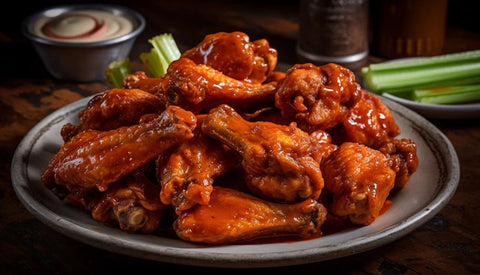What are some strategies to manage food costs in my restaurant?
In the restaurant industry, where margins are often razor-thin, controlling food costs is paramount to maintaining profitability. Keeping an eagle eye on every ingredient and their utilization can make a considerable difference in the business's bottom line. With that in mind, let's explore some practical strategies for managing food costs in your restaurant.
One of the most fundamental methods is to Establish Par Levels for your inventory. Par levels are the minimum amount of inventory needed to meet customer demand while avoiding running out of products or having too much stock. They help control food waste and ensure you are not tying up capital in excessive inventory.

Another critical strategy is Regular Inventory Management. Regularly tracking what comes in and goes out of your restaurant allows you to identify patterns, anticipate needs, and avoid waste due to spoilage. Implementing a First-In-First-Out (FIFO) policy ensures older inventory is used first, reducing the chance of spoilage.
Negotiating with Suppliers is another critical cost management strategy. Building strong relationships with suppliers could give you some leverage when negotiating prices, payment terms, or even bulk purchase discounts.
One cannot underestimate the importance of Portion Control. By standardizing portions, you ensure consistent taste and quality while controlling the cost of each dish. This could involve using specific measuring tools or pre-portioning ingredients.
Menu Engineering is a method that leverages the popularity and profitability of dishes to optimize your menu's financial performance. This involves categorizing menu items as stars, plowhorses, puzzles, or dogs based on their popularity and contribution margin, and then designing the menu to highlight 'stars' and improve the performance of other categories.

Reducing Waste is a straightforward yet often overlooked strategy. This could involve training your staff to handle food correctly, using trimmings and leftovers wisely, or storing food at correct temperatures to prevent spoilage.
Seasonal Menu Planning can be a clever way to manage food costs. Designing menus based on the availability of seasonal produce could potentially lower your ingredient costs, as in-season produce is usually plentiful and cheaper.
Regular Price Comparisons among different suppliers can help you get the best prices for your ingredients. However, while looking for the best deal, don’t compromise on the quality of ingredients as it could affect your food quality.

Training your staff to Understand the Cost Implications of food waste can also have a significant impact. When staff understand the direct connection between waste and the restaurant's profitability (and potentially their job security), they are more likely to be careful with portioning, preparation, and handling of food.
Lastly, Implementing Technology like a restaurant management software can significantly simplify inventory management, menu engineering, and tracking food costs. While there might be an upfront cost involved, the long-term savings and efficiency gains could easily outweigh that initial investment.
In conclusion, managing food costs in a restaurant involves a combination of strategies centered around efficient inventory management, strategic menu planning, portion control, waste reduction, and effective use of technology. By implementing these tactics, restaurant owners can keep food costs in check, improve their bottom line, and ensure their establishment stays financially healthy and competitive in the bustling restaurant industry.
